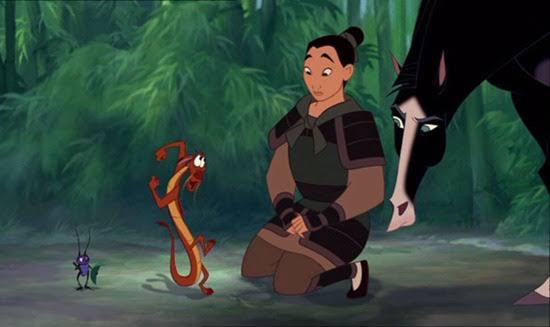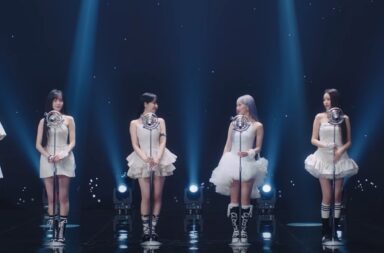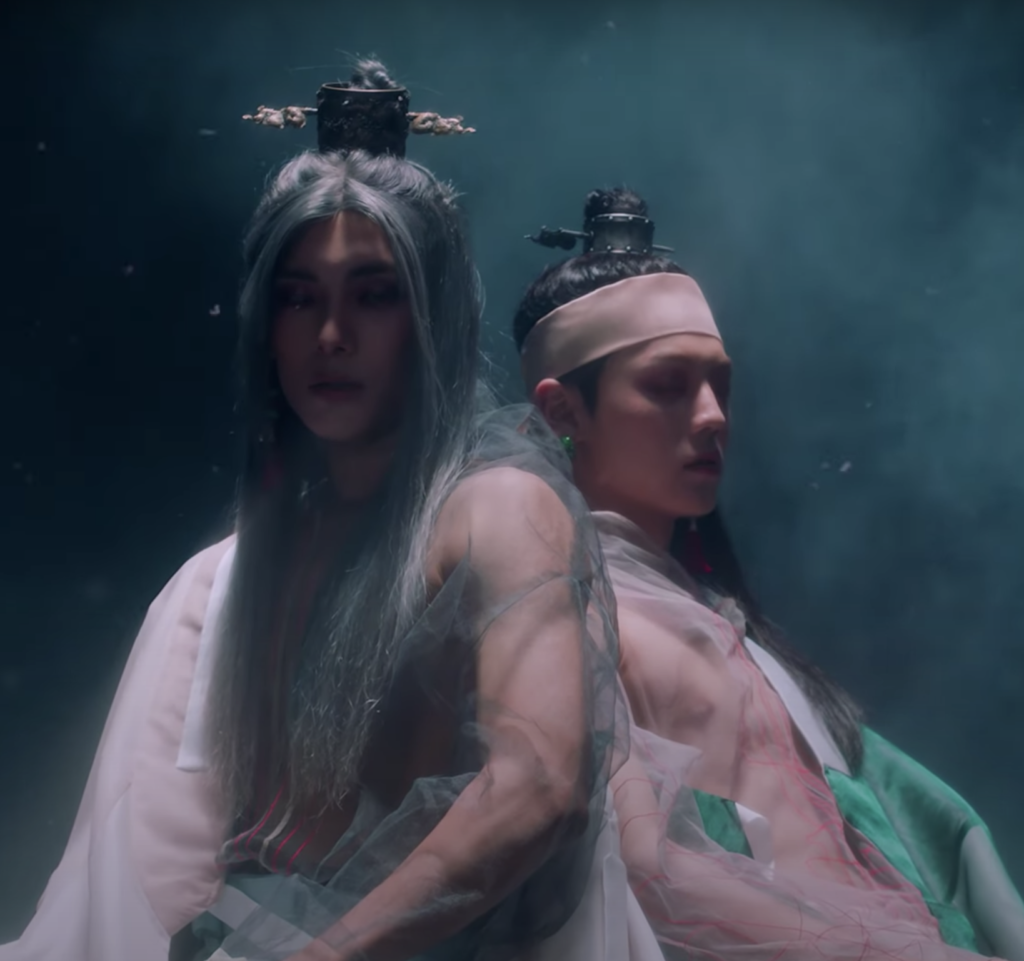
All signs pointed to one conclusion: with their comeback “Favorite Boys” and accompanying album The Butterfly Phantasy, A.C.E would delve into Zhuangzi’s famous butterfly dream. Yet while “Favorite Boys” is one of the standout songs of 2020 so far, its MV is… a letdown.
First, an explanation: Zhuangzi, also known as Zhuang Zhou, is one of China’s most well-known ancient philosophers. His eponymous work is a cornerstone of Taoism, philosophy, and Chinese literature. Zhuangzi’s (translated) butterfly dream is as follows:
Once upon a time, I, Zhuang Zhou, dreamt I was a butterfly, fluttering hither and thither, to all intents and purposes a butterfly. I was conscious only of my happiness as a butterfly, unaware that I was Zhou.
Soon I awaked, and there I was, veritably myself again. Now I do not know whether I was then a man dreaming I was a butterfly, or whether I am now a butterfly, dreaming I am a man. Between a man and a butterfly there is necessarily a distinction. The transition is called the transformation of material things.
There’s quite a bit to unpack here: Zhuangzi questions the boundaries between dreams and reality, wondering if our dream-selves are actually our real selves. Moreover, he establishes that we may never know — for how can be we so confident that we are not stuck in a dreamworld? How can we accurately differentiate reality from dreams?
Given these complex ideas, all of the teasers for A.C.E’s comeback seemed very promising.
The “opening video” teaser featured an intense spoken word performance. “But is it you, who has bewitched me?” the members murmured, seemingly connecting the butterfly dream to the concept of ambiguity in love — just as Zhuangzi is unsure if he’s a butterfly or a man, A.C.E question whether they or their lover is the bewitching one.
And the teaser video shows the members staring at a platter of fruit, before giving in and eating the fruit — perhaps a correlation with Eve’s original sin. If the “Favorite Boys” MV actually continued the cinematic themes of its teaser video, then perhaps it could’ve become a complex juxtaposition of ancient Chinese philosophy and equally ancient Western religion — a very unique way of framing K-pop’s familiar “tempting love” theme.
The concept photos, too, seemed to hint at a dramatic, nuanced MV filled with references to Zhuangzi’s butterfly theme. The photos were filled with traditional Asian imagery, almost resembling stills taken from a historical drama.
Even the album cover — emblazoned with “胡蝶之梦,” Chinese for “butterfly dream” — heavily linked ACE’s comeback with traditional Asian culture.

Alas, ‘twas not meant to be. For A.C.E explored none of these hefty ideas in their “Favorite Boys” MV. Instead, the MV is dedicated to flashy juxtapositions of traditional and modern imagery, with a dose of A.C.E’s gender-shattering fashion. By K-pop standards, the “Favorite Boys” MV is perfectly competent — yet given its dramatic teasers, the video feels almost appropriative and offensive.
The MV is a study of contrasts. Take, for example, its use of traditional and modern elements. In one scene, Jun wears a Nike headband while standing against a much more traditional backdrop of a gnarled tree and paper-frame doors. In another shot, Donghun’s flowy robes contrast directly with the extremely modern and artificial green lighting.
“Favorite Boys” also employs color theory to build its theme of contrasts. The two dominant colors here are red and green — complete opposites on the color wheel. So by placing these opposite colors together, “Favorite Boys” creates bold, interesting visuals. We see the red-green motif several times.
Wow raps and sings against a backdrop of bamboo and shelves filled with red and green vases — an image that’s weirdly reminiscent of the animated Mulan film. Red and green, check. Bamboo, check. Black-and-white cow patterns, check. (Remember Mushu’s iconic line? If not, shame on your cow!)
Ahem. Anyway, Chan is also shown with boldly clashing reds and greens. His solo shots depict a landscape painting, seemingly inspired by traditional Asian painting styles — but with the aforementioned red-green contrast. So Chan’s solo scene has a color contrast, but also a traditional-modern contrast.
Given these bold rich colors, the chorus dance set seems jarringly out of place. The members perform against a stark white-and-black background designed to look like traditional paper doors. (Is it just me, or does this scene look a lot like NCT 127’s “Kick It”?) Later, some bright reds are introduced to the chorus shots. But the chorus scenes still feel almost flat, compared to the vivid colors during the verses — not a great choice.
And of course, this being an A.C.E video, “Favorite Boys” plays around with gender contrasts. Consider Byeongkwan’s heavily feminine makeup and fashion, complete with a dainty butterfly. But the very next shot is of his abs, switching immediately from hyper-femininity to hypermasculinity.
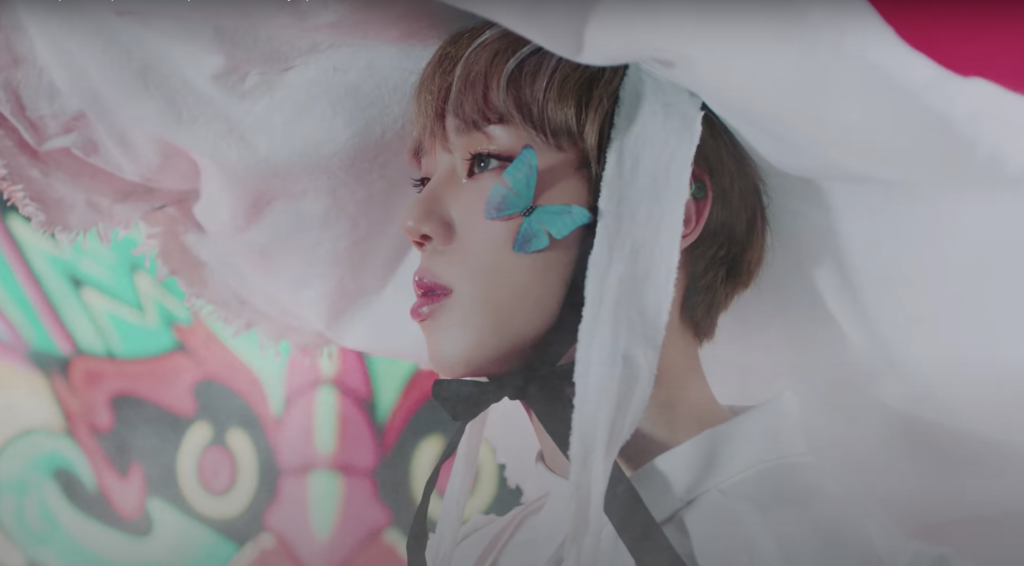
Later in the MV, there’s a shot of Jun with gorgeous eye makeup accents: four small white dots on his eyelashes. Although male K-pop idols do wear heavy eye makeup, they rarely sport creative little adornments like Jun’s — this is a relatively feminine look. But even as we see Jun’s beautiful makeup, we also hear his very masculine voice at the same time — yet another contrast.
And finally, “Favorite Boys” employs a third subtle reference to gender: dragons and butterflies. In traditional Asian culture, dragons represent masculinity and phoenixes represent femininity — since A.C.E is gunning for a butterfly dream concept, they’ve replaced phoenixes with butterflies here. Normally, we’d expect this display of genders as a “boy in love” situation. Yet consider the lyrics of “Favorite Boys”:
I be them haters’ secret favorite
Check the handphone bet they got ACE up in the playlist
Don’t compare, whatever you do, whatever you try to wear
We do it better, our form is different even if you try to look from afar
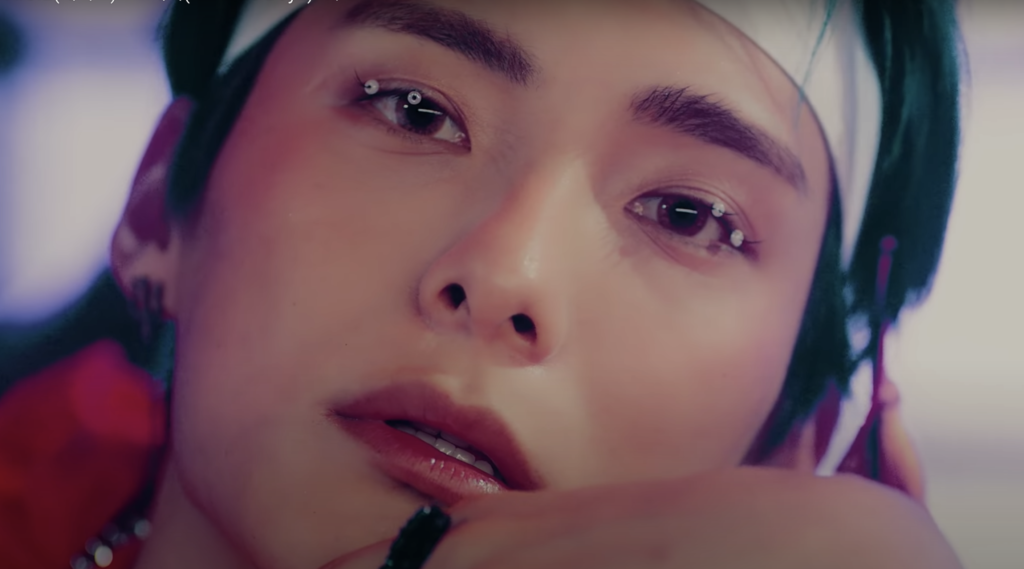
This song has a pretty straightforward message: Shut up, haters! I’m everyone’s favorite boy! Behold, my awesomeness! With this (admittedly self-centered) theme, the MV makes no room for romantic considerations — instead, it’s meant as an expression of A.C.E’s self-identity. So by depicting both dragons and butterflies, perhaps the MV suggests that all people can possess both masculine and feminine elements? Maybe?
And from there, maybe we can say that “Favorite Boys” is… um, a brilliant application of Zhuangzi’s idea of ambiguity to, um, modern-day gender stereotypes…
Yeah, no. Because, again, look at the lyrics. They are shallow. Vapid. This is not a deep song. This is not an artistic song. “Favorite Boys” is a blast of simple fun — it would be silly to try to make this braggadocious song into a real artistic statement.
And that’s perfectly fine. K-pop doesn’t need to dissect human nature and present brilliant philosophical musings.
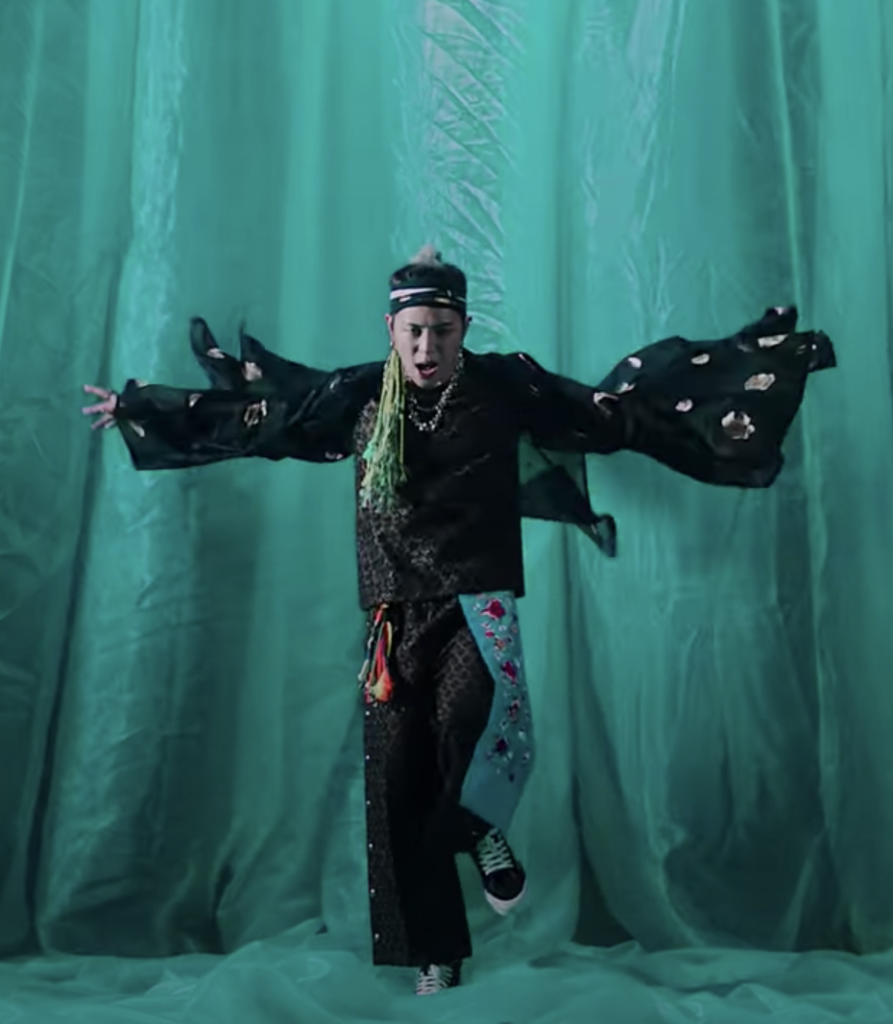
But if A.C.E didn’t intend to navigate the intricacies of Zhuangzi’s famous Butterfly Dream passage, then why all the pretentious teasers? Why did they have to play up the traditional visuals so much? The answer is simple: cultural appropriation.
Unlike SuperM’s excellent “Tiger Inside,” which never tries to be anything other than kitschy, A.C.E has already spent far too much time teasing an “insightful” and “philosophical” song. No, “Favorite Boys” does not fit either descriptor — I mean, just listen to the inane chorus! “Ddak come out, come, thump-thump hit me!” indeed.
Because it has been so thoroughly marketed as some profound and dramatic representation of Taoist philosophy, “Favorite Boys”’s shallowness is harmful. It seems that A.C.E knowingly ignored all the nuance of an ancient Chinese literary masterpiece and instead chose to use it as an “aesthetic.” Cultural appropriation, plain and simple.
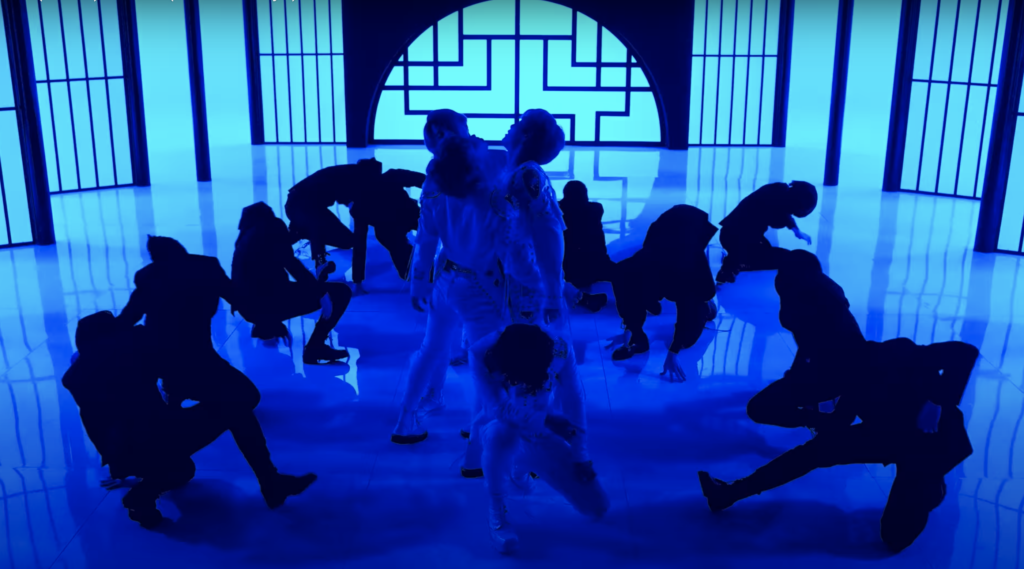
That said, though, my ears can’t see. “Favorite Boys” is a musical, if not visual, masterpiece. Its blend of rock and hiphop feels very authentically A.C.E. During the first verse, a smattering of distorted screams à la “Side Effects” provides a quick jolt of texture and interest — although thankfully, the screams then abate without wearing out their welcome. Another fascinating production choice: horrorshow synths. It’s been a while since I’ve heard anything as unique as “Favorite Boys” in K-pop.
These idiosyncratic touches are wonderful, yes, but “Favorite Boys” is also a surprisingly strong example of classic songwriting. It bucks the latest musical trends — double-time snare drums during the prechorus, short simplistic choruses, second verse trap breakdowns — and instead focuses on a consistent, coherent sense of energy.
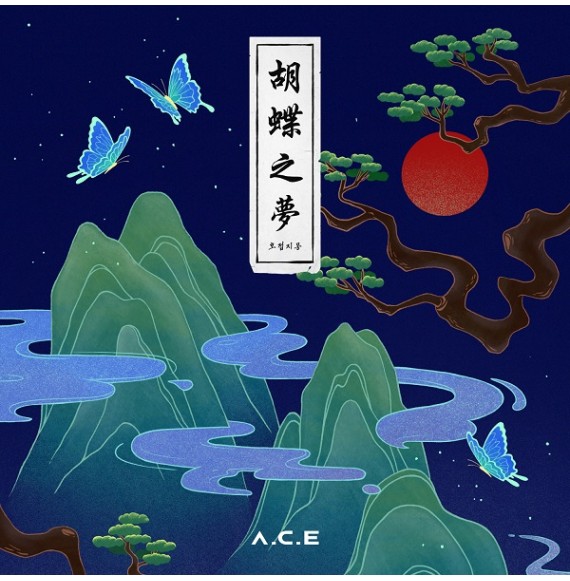
The unusually long chorus, with a chantlike hook that gives way to a more melodic section, is one of very few two-part K-pop choruses this year. This complexity marks “Favorite Boys” as a song that will likely age very, very well — because there’s always new layers to unpack with subsequent listens.
Even more excitingly, the second verse of “Favorite Boys” actually feels like a cohesive continuation of the song’s energy! After so many jarring trap-rap second verses, “Favorite Boys” feels like a real breath of fresh air.
Therefore, despite “Favorite Boys”’s poorly-conceived MV, I actually adore the song. It’s too compelling to not love. Take my words with a grain of salt, though — I am not a Taoist, and I am a Chinese-American. I don’t know how “Favorite Boys” might be perceived by Taoists or Chinese citizens who are more deeply connected to Zhuangzi than I am.
So, dear readers, let me know what you think of “Favorite Boys” in the comments! Let’s indulge in some philosophy of our own: can musical strength compensate for offensive visuals?
(Zhuangzi. YouTube. Images via Beat Interactive Entertainment.)

